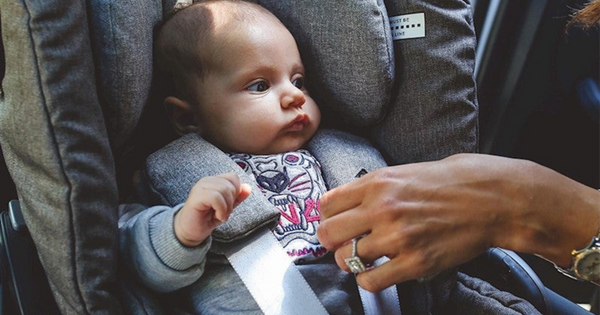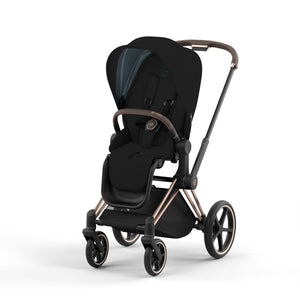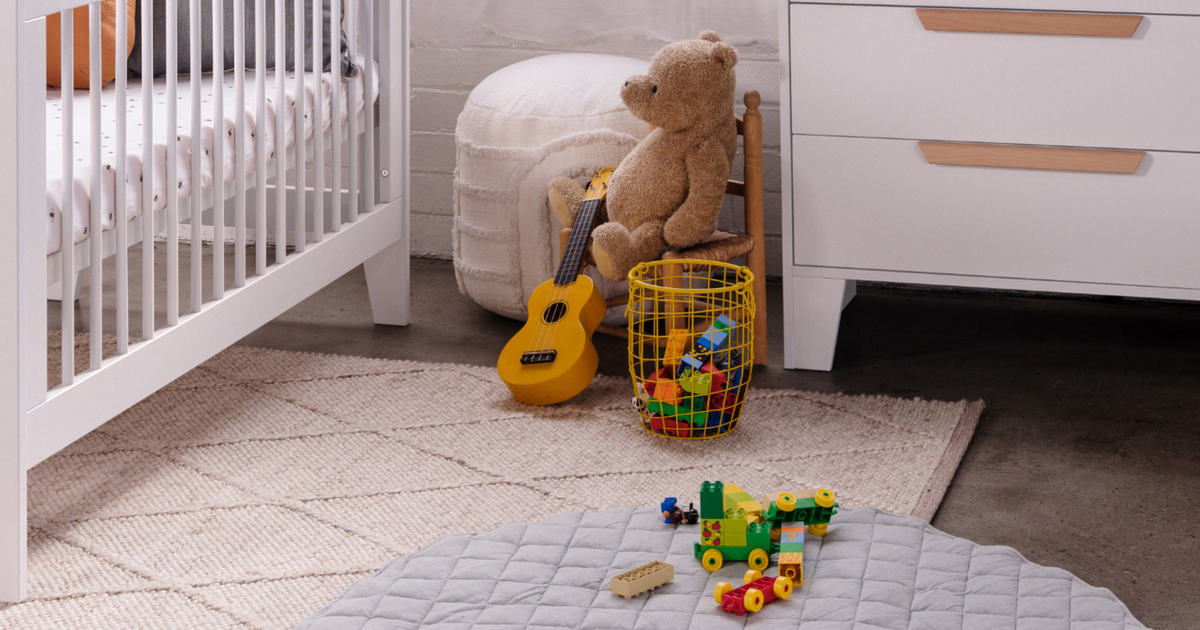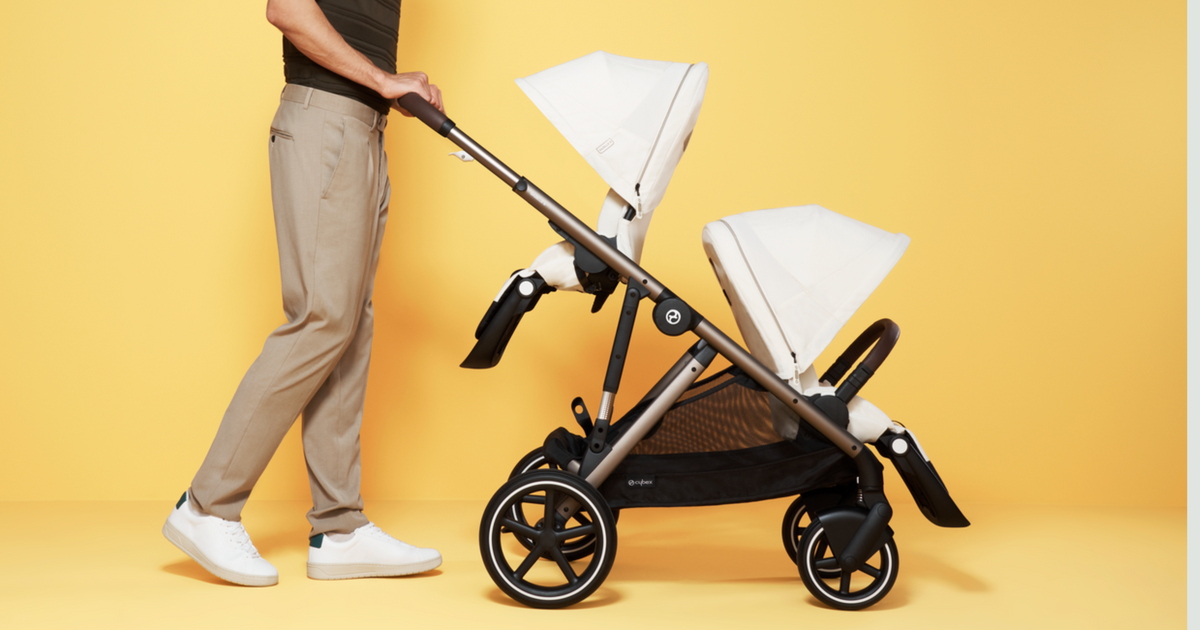Tips for taking your newborn home from the hospital

Note: this article is based on 2022 Australian health and safety guidelines and mentions the Cybex Cloud Q capsule, only available in Australia. For NZ customers, please refer to the Cybex Cloud Z capsule.
It’s time to take your baby home for the first time… now what?
If the birth was straightforward and both you and baby are healthy, you can typically expect to go home anywhere within a day to five days, depending on the guidance of your care provider.
Leaving the safety bubble of the hospital for the first time with your little one can feel daunting, so we’re here to help you navigate it. In this article we cover everything from making sure your car seat is ready, to suggestions if you don’t own a car, taking preemies home, as well as helpful tips for your partner to make the process as smooth as possible.
Your car seat 101 checklist
Once you’ve been discharged, the next step is to ensure your baby is safe and snug in their car seat or infant capsule.
Some babies like to make an early entrance, and a safe car seat is one of the most important priorities. Most hospitals won’t let you leave until they’ve checked your car seat is safe to use and correctly installed, so we recommend going through this checklist a few weeks before your due date – the last thing you want to worry about is setting up a car seat in the hospital car park when you’ve got a newborn on your hands!
-
Have you checked the safety rating of your chosen car seat?
In Australia, car accidents are the leading cause of death in children, so choosing a car seat or capsule that meets or exceeds Australian safety standards is one of the most important things you can do as a new parent.
Discover Australia’s highest safety rated capsule here →
-
Is your car seat suitable for the age and weight of your newborn?
Some car seats and capsules are only suitable from a certain weight or height. Make sure you don’t accidentally choose one that isn't suitable for newborns.
-
Is the car seat or infant capsule rear-facing?
By law, babies need to travel in a rear-facing car seat for six months as an absolute minimum. They should however remain rear-facing for as long as possible, as this is the safest position when travelling in a vehicle. Some infant capsules only last until six months, whereas others last up to 12 months, which may be a better investment.
-
Has it been correctly installed?
According to Kidsafe Queensland, as many as four out of five car seats checked are incorrectly installed. A properly fitted car seat can save your child’s life, so the best advice is to have the car seat or capsule professionally fitted.
-
Have you practiced using the car seat’s straps?
Car seat straps can take a little getting used to. It’s worth practicing with a teddy before the big day arrives.
-
Does your car need a quick clean?
Just like your house needs a thorough clean before baby arrives, it’s important to ensure your car is a safe environment for a newborn.
Read about the benefits of choosing an infant capsule over a traditional car seat and how to choose the right capsule.
What if you don’t own a car?
If you’re one of the many Aussies who rely on public transport, rideshares, biking, or you simply snag a ride from family and friends when needed, you need to have a plan in place that meets the hospital’s requirements before you can be discharged.
Hospitals are very cautious about ensuring the baby’s safety on the journey home. For this reason, it’s unlikely they would greenlight you leaving via public transport - not only are newborns’ immune systems still particularly vulnerable, but it would not be possible to install a car seat on a bus, tram or train. Likewise, it may be particularly hot or cold, making walking with a stroller potentially harmful to a newborn, while mothers may not be physically ready to walk home, even if it’s not far.
Most people will ask a friend or relative to pick them up. If you choose this route, ask them to arrive with time to spare to safely install your car seat for the ride home.
Another option is to take a taxi or rideshare home. When it comes to popular rideshares, these are your options:
- Uber only provides forward-facing child restraints (at a $10 surcharge) for children older than two. You will need to bring your own child restraint for a newborn.
- DiDi and Ola require you to bring your own child restraint that complies with state laws.
- Bolt offers a ‘travelling with children’ category in some cities. If your city doesn’t have the option, they recommend contacting the driver to see if they have a car seat (but this may not be suitable for a newborn). If not, you’ll need to provide your own child restraint.
While there are some states that don’t require car seats in rideshares, knowing the safety statistics, it really should be a non-negotiable to parents.

Small things your partner can do to make the process smoother
We asked parents who’ve ‘been there’ what they wish someone had told them before leaving the hospital, and this is what they said (dads or birth partners, this one’s for you!):
- Make sure the car is filled with petrol and ready to roll
- A capsule makes transferring the baby in and out of the car much simpler
- Wait until baby is well fed and both mum and baby are feeling as comfortable and relaxed as possible before you begin the transition to the car
- Bring the car to the exit so mum and baby don’t have to walk far
Taking your preemie home
The first car ride is a massive milestone for a sick or premature baby! It means they are no longer reliant on specialist care and equipment and it’s finally time to go home. As parents of a preemie, you’ve already been through a rollercoaster of emotions, so it’s understandable if you experience heightened emotions about your baby’s wellbeing on the journey home.
The first thing you should know is that the hospital will wait until they are completely confident that both you and your baby are ready before they discharge you. Leading up to the ride home, your care providers will equip you to take over the care of your baby and any special needs they may have. You’re not alone. Ask as many questions as you want and don’t be afraid to ask for additional support.
If your child has been in the NICU, it’s a good idea to take your car seat to the hospital ahead of time for a once-over. Your care providers will be able to assess its suitability for any special requirements your baby may have, giving you time to find an alternative.

Our final advice is to take things easy. Be kind to yourselves, take your time, and ask for help where needed. While it may feel daunting at first, you’ll get the hang of it quickly, (especially with the right equipment like a Cybex Cloud Q capsule!) and soon enough you’ll be taking your baby to get checkups, groceries or coffee without a second thought.
You can find more state-specific information about taking your baby home here: ACT, NSW, NT, QLD, SA, Tas, Vic, WA.
Anstel has a team of passionate expert representatives. Get in touch with us today with any questions about your capsule purchase and newborn essentials.
More helpful articles for soon-to-be parents:
- Do I really need an infant capsule?
- How to choose the right capsule (Cybex Cloud Q vs Bugaboo Turtle by Nuna)
- What most parents overlook when preparing for their new baby
- Why rattan is an eco-conscious nursery choice
- 8 tips for travelling with a baby
- Australian Parental Leave Pay overview
- What's the ideal room temperature for baby?
- Working towards a safe sleep future for Red Nose Day 2022




